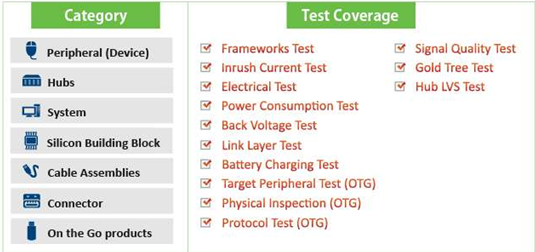The Importance of An Impartial Third Party Testing Lab
As more and more of us rely on smart devices to lubricate and ease the perpetual motion of our daily activities, we may have alluded or taken for granted the safety and precautionary measures hence provided by industries and manufacturers.
Recent media coverage regarding the safety of consumer electronic devices, have caught our attention; especially when many of our gadgets today are manufactured and tested by the same institutions. Hence, possibly causing flaws or biased judgment during the certification process. Therefore, when another related incident from a product which, was born via this “α & Ω solution”. We as a responsible and professional institution had to ask ourselves the dodgy question we’ve all known for a while by now. “Is a one way arrangement from drawing board to certification and manufacturing, really what we want?” However, in defense of multinational conglomerates one must understand the implications and benefits of having everything wrapped up together as a single package. The following, will endeavor to shed light on these issues and possible alternatives that may further and promote better safety and scrutiny towards certification and compliance standards.
But let’s explore the main cause behind these events. When a fire occurs, it is usually caused by an internal short in the battery. Hence lithium-ion cells contain a separator sheet that keeps the positive and negative electrodes apart. If that sheet gets punctured and the electrodes touch, the battery heats up very quickly. You may have experienced the kind of heat a battery can produce if you have ever put a normal 9-volt battery in your pocket. If a coin shorts across the two terminals, the battery gets quite hot.
In a separator failure, that same kind of short happens inside the lithium-ion battery. Since lithium-ion batteries are so energetic, they get very hot. The heat causes the battery to vent the organic solvent used as an electrolyte, and the heat (or a nearby spark) can light it. Once that happens inside one of the cells, the heat of the fire cascades to the other cells and the whole pack goes up in flames.
In order to ensure the overall safety of hand held smart devices the following could be useful “Hardware Design Validation” and “USB-IF Compliance Program Test Coverage”. These tests include and are not limited to the following.
Hardware Design Validation
Hardware design validation aims to allocate key issues at the early stage of product design and development. Experts are capable of reviewing design circuit and layout routings, and further provide real-time troubleshooting solutions and suggestions on the revised versions of the product during development. Hardware design validation services include:
- Signal Integrity
- Key Component Validation
- RF Validation
One of the key testing benchmarks for “Signal Integrity” is “Power Measurement” these embody various safety checks including but not limited to AC/DC Power Efficiency, Power Factor, Inrush Current, and Protection Function Check.
USB-IF Compliance Program Test Coverage
This also brings to mind another underlying issue which is entwined and closely related to the grater picture “USB-IF compliance program testing” which includes vital testing benchmarks related to cable, device, dongle, connectors and electrical charging safety.
The USB specification defines the product specifications for the hardware interface and components. To enforce product compliance with USB specifications, USB-IF has instituted a Compliance Program that provides reasonable technical guidelines. Products that pass compliance testing are added to an Integrator List and receive the right to use the USB logo.
This is especially imperative with USB Type-C® (devices, chargers, cables, dongles and connectors) if the assorted mechanisms are uncertified or counterfeit you could experience these issues when cable pins are not accurately unallied:
- Your device could become damaged
- The cable might be easily damaged
- The connector end may break off, weaken, or might not fit properly into your device, which could damage the port
- You might not be able to sync or charge your USB device properly
- May cause connecting device battery to be over capacitated and burn while charging.
- The device may not function as anticipated
These are but some of the certification and compliance standards that companies must under go to ensure product safety and reliability. However, all this indicates mountains of litigation and countless man hours if handled individually; thus, it would be financially and otherwise more productive to create or head you own in house testing lab for certification and testing that adheres to and follows international standards and certifications. This has been dubbed as the classical solution for most multinationals with similar dilemmas and has been proven to be worth while if all things go well.
Alas, when timelines are tight and corporate cost down on materials and production costs are slashed the human initiative of greed comes into play and“Once you start down the dark path, forever will it dominate your destiny, consume you it will.”
Then what good was intended in the beginning becomes a fall back into a “Gestapo Style, Judge Jury and Verdict”, of course this is in extreme circumstances which has yet to accrue; but, one trembles at the possibility where corporate greed could possibly force its will upon safety and quality.
In spite of these negative possibilities there is still light at the end of the tunnel. In other words, instead of total monopoly, that has the likelihood of turning into a PR horror show. Why not dismiss the potential risks by allowing a third-party certification and testing lab to thoroughly check and ratify all potential issues before the total recall and over the roof top settlements.
With all this in mind I leave it to you reading to decide which path to pursue and who you want manufacturing you daily necessities.







































